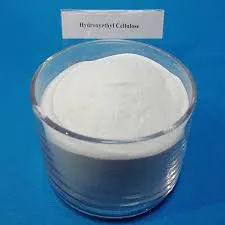
نويابىر . 17, 2024 17:28 Back to list
Exploring the Properties and Applications of HPMC Grades in Various Industries
Understanding the Grades of HPMC A Comprehensive Overview
Understanding the Grades of HPMC A Comprehensive Overview
HPMC grades are typically categorized based on their viscosity, degree of substitution, and solubility. The viscosity of HPMC is one of the key factors that define its grade. It is measured in centipoise (cP) and can range from low to high viscosity. Low viscosity grades are generally characterized by their ability to form thin films and are often used in applications like coatings and adhesives. In contrast, high viscosity grades exhibit thickening properties, making them suitable for use in formulations requiring enhanced texture and stability, such as in pharmaceuticals where they serve as binders and controlled-release agents.
grades of hpmc

Another important aspect of HPMC grading is the degree of substitution, which refers to the average number of hydroxyl groups on the cellulose chain that have been replaced by hydroxypropyl and methyl groups. This alteration affects not only the solubility of HPMC in water and organic solvents, but also its thermal properties and gel-forming ability. Higher degrees of substitution typically lead to better water solubility and a clearer solution, making those grades more desirable in applications like food processing and cosmetics.
In the pharmaceutical industry, HPMC grades are critically important. They are used in the formulation of tablets, capsules, and other oral dosage forms. Depending on the desired release profile of the active ingredient, formulators select specific grades of HPMC that will control the rate at which the drug is released in the body. For example, low viscosity HPMC may be utilized for immediate-release tablets, while high viscosity varieties are preferred for sustained-release applications.
In conclusion, the grades of HPMC play a pivotal role in determining its suitability for various applications across multiple industries. Understanding the different grades and their respective characteristics allows manufacturers and formulators to select the right type of HPMC for their specific needs. This ensures optimal performance and efficacy in products ranging from medicinal formulations to food additives and construction materials. With continuous advancements in processing technologies, the development of new HPMC grades promises to enhance its applications even further, addressing the evolving demands of the industry.
-
Versatile Hpmc Uses in Different Industries
NewsJun.19,2025
-
Redispersible Powder's Role in Enhancing Durability of Construction Products
NewsJun.19,2025
-
Hydroxyethyl Cellulose Applications Driving Green Industrial Processes
NewsJun.19,2025
-
Exploring Different Redispersible Polymer Powder
NewsJun.19,2025
-
Choosing the Right Mortar Bonding Agent
NewsJun.19,2025
-
Applications and Significance of China Hpmc in Modern Industries
NewsJun.19,2025







